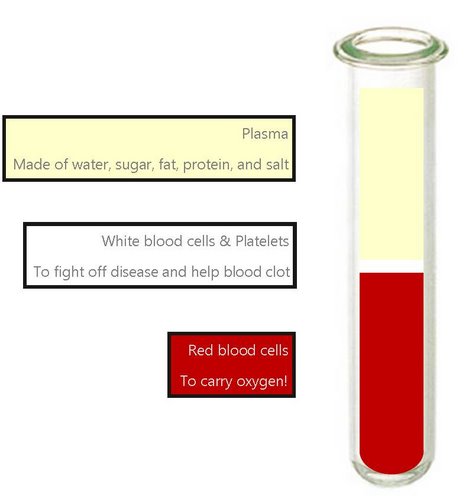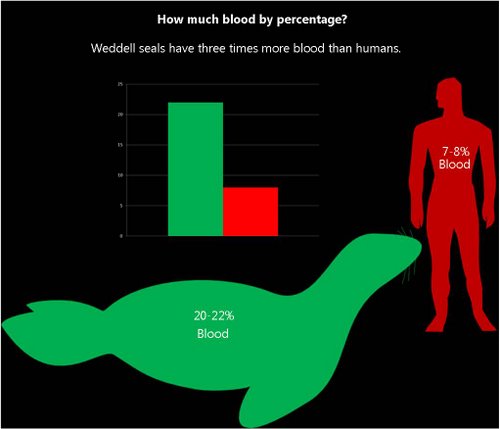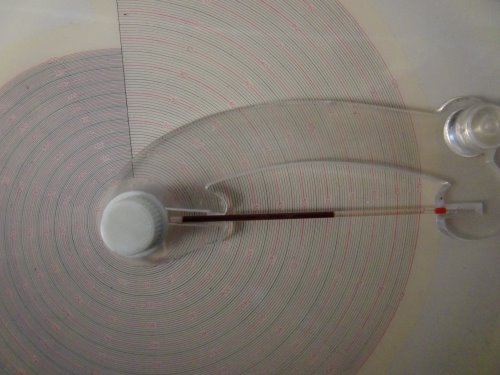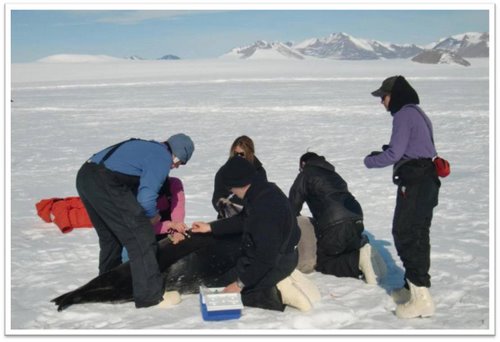This journal brought to you by...
- Becky Shimp and her 6, 7 and 8 grade students
- Mrs. Garay and her students at Redd School
- St. Ann 6th grade Sparks students
A Closer Look at … a Weddell Seal’s Blood
Blood… is one thing that all mammals have in common. But is all blood the same? To find the answer, let’s look at how a Weddell Seal’s blood compares to mine! But first, let’s talk about the parts and purpose of blood.
The part and purpose of blood
There are four main parts of blood – red blood cells, white blood cells, platelets and plasma – each with its own purpose. Let’s take a closer look!

Plasma – is the liquid part of our blood. About half of our blood is plasma, which is a yellow liquid made of water, sugar, fat, protein, and salt. Its job is to transport the cells, nutrients, proteins, hormones and waste throughout your body.
Platelets - also called thrombocytes, (pronounced: throm-buh-sytes) Platelets help our blood to clot. These tiny fragments of cells attach to the blood vessels at the site of wounds, so the blood will clot and the wound can heal. They are less than 1% of our blood
White Cells - also called leukocytes (pronounced: loo-kuh-sytes) Only about 1% of our blood is white blood cells, but they have the important job of protecting our bodies and fighting infection from unwanted bacteria, viruses, and fungi.
Red Cells – also called Erythrocytes, pronounced: (ih-rith-ruh-sytes) accounts for about 40-45 percent of blood in humans. Red blood cells have hemoglobin protein - in fact they are like little sacks of hemoglobin. Hemoglobin’s main job is to transport oxygen from the lungs to all the living tissues in our bodies, and then carry away waste like carbon dioxide.
The oxygen carrying red blood cells are what the research team is most interested in!
But, now that we know a little more about blood, let’s see what makes Weddell Seal blood different from ours.
Let’s compare the amount of blood
First, let’s compare how much blood each animal actually has in their body.
The human body is made up of about 7% blood. A Weddell Seal’s body is about 20% blood.

Wow! That means seals have nearly 3 times as much blood as we do!
Let’s compare Red Blood Cells
Now remember, one of the main jobs of red blood cells is to transport oxygen from the lungs to all the living tissues and organs in an animal’s body. Since I’ve been down here we’ve been taking blood samples on each seal to see...
- The percentage of red blood cells
- How big and how many red blood cells
- The amount of oxygen carrying pigment
Testing these three things tells us, in part, about the animal’s health and how much oxygen the seal can store.
Hematocrit
Hematocrit is the packed volume of red blood cells in your blood. In other words, your hematocrit level tells you how much of your blood is actually made up of the oxygen carrying red blood cells.
Hematocrit = percent volume of red blood cells

The higher the percentage, the more oxygen the seal can carry – and that’s a very good thing! Before setting out to Antarctica, I had to go to the doctor for a physical, and the doctor drew my blood to measure my hematocrit level. Mine was 35.5 – that’s 35.5 % red blood cells. The seals we’ve tested have had hematocrit levels ranging between 50-70%. So, about twice as much of Weddell seal blood is actually made up of the oxygen carrying red blood cells.

Still, knowing the hematocrit, or volume of red blood cells, does not necessarily tell us how many red blood cells the seals have. The space taken up by red blood cells in the blood could be from either having a lot of very small red blood cells, or from having fewer, larger red blood cells. That is why we also count red blood cells for the Weddell seals.
Red blood cell counts
We count how many red blood cells the seals have using a hemocytometer and microscope. These grids are designed to hold a specific amount of liquid. By counting the number of red blood cells on this grid, we can determine how many cells there are in a given amount of blood.


Weddell seals do not necessarily have a lot more red blood cells than humans, their red blood cells are just much larger. That is why their hematocrits, or red cell volumes are greater - about 50% greater.
Hemoglobin
Hemoglobin is a special protein in the red blood cells that helps carry oxygen from the lungs to the rest of the body and then returns carbon dioxide from the body to the lungs so it can be exhaled.
Hemoglobin = oxygen carrier
So far, we know that Weddells have 3 times more blood than we do, double the proportion of red blood cells (hematocrit) than we do. Already, they can carry quite a bit more oxygen than we can – but there’s more! When the doctor drew my blood, he also measured my hemoglobin. This may get a bit complicated, but stick with me. Hemoglobin is in the red blood cells, and it’s the molecule that oxygen binds to. No matter what kind of mammal you look at, their hemoglobin will bind to the same amount of oxygen. But some species have more hemoglobin than others. Did you guess that Weddells have more than humans? You’re right! My hemoglobin level was 12.3% , but the Weddell seal we measured had 20-28 grams of hemoglobin protein in 100 milliliters of blood (17-24).

This all sounds great - Weddell seals have more blood and greater ability to carry oxygen for underwater dives - which means they can hold their breath for a long time. But, since more of the blood is made up of red blood cells, the blood is more viscous. What this means is that it would be much harder for the heart to pump this thick blood. Luckily, Weddell seals can deal with this problem too. A lot of red blood cells are stored in the spleen and a sac in the liver (called a sinus). When the seals begin a dive, these stores are released and the red blood cells can carry oxygen to the heart and brain where oxygen is needed.
Let’s review!
Weddell Seals have 3 times more blood + 50% more of that blood is made of really large red blood cells to carry oxygen + 30 % more hemoglobin for oxygen to bind to. That is a lot more than I have – It’s a good thing I don’t live in the icy Antarctic waters.
Can you tell that Oxygen is the key! Seals need oxygen to survive, but they can’t get it underwater. So their blood is specially developed to store and carry enough oxygen to supply their brain and heart, as well as their hard-working muscles! What a terrific animal!


Comments